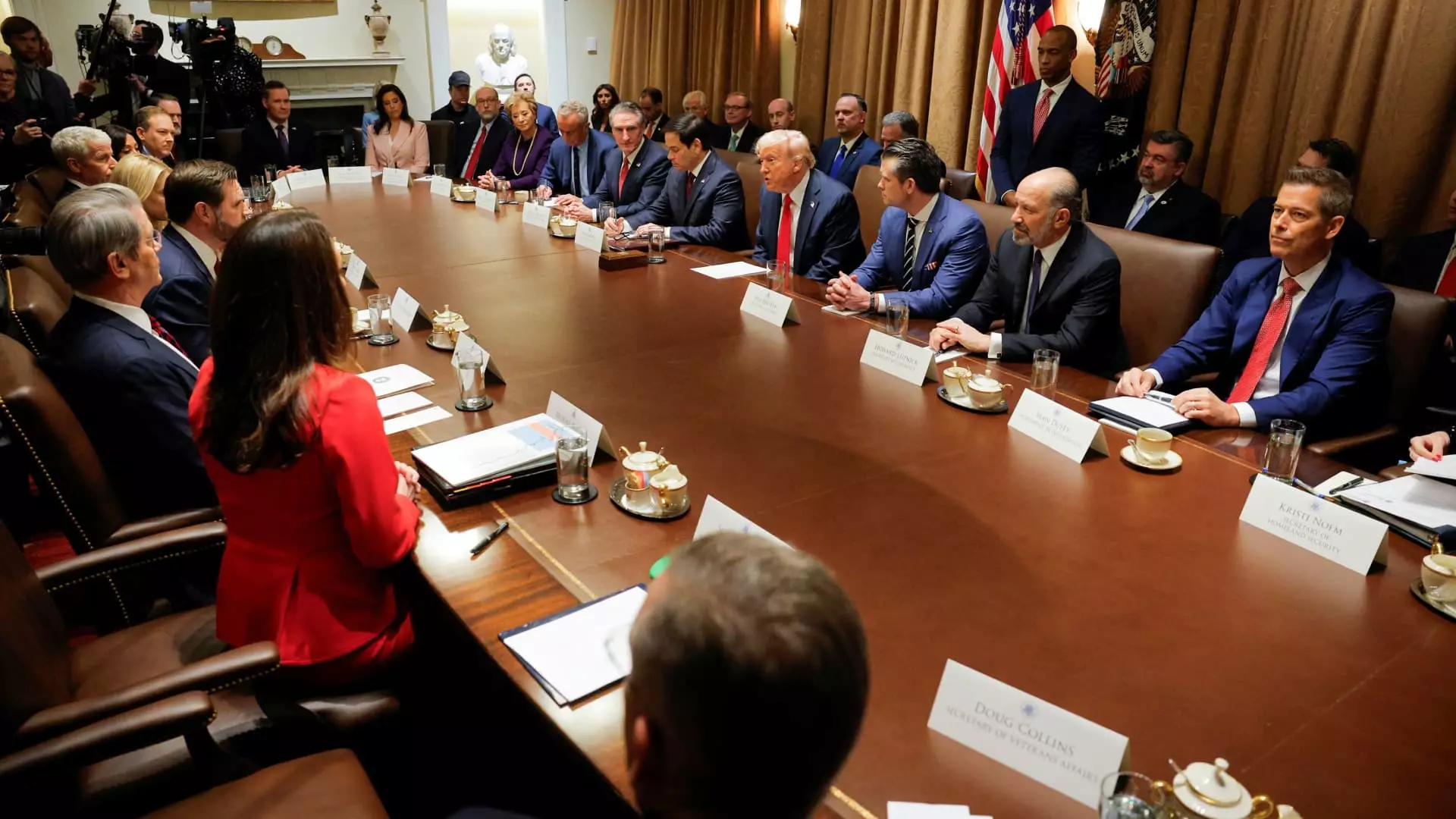The landscape of U.S. immigration could soon experience a seismic shift with the introduction of President Donald Trump’s proposed $5 million “gold card” visa. This bold initiative aims to entice financially elite foreigners to invest in the country in exchange for residency and a pathway to citizenship. At first glance, the idea appears lucrative, but it raises critical questions regarding its viability, implications for tax policy, and the nature of its demand among ultra-wealthy individuals.
The gold card visa proposal is envisioned as a simplified option for wealthy foreign nationals seeking to secure U.S. residency, contrasting sharply with the existing programs fraught with complications and limitations. The allure of a singular investment figure—$5 million—coupled with the promise of citizenship is appealing, especially when compared to alternatives that involve navigating a complex array of regulations and documentation. As dominant players in global wealth management highlight, many high-net-worth individuals are eager for a more straightforward pathway to living in the United States.
According to industry insiders, the anticipated demand for this visa type is notable. Dominic Volek of Henley & Partners eloquently stated the program reflects the enduring attraction of the U.S. as a hub for wealth accumulation. However, it’s essential to remember that while the proposal is tantalizing, its success hinges on how well it attracts a significant number of applicants willing to meet the high financial demands.
A Tax Loophole Advantage
One of the most controversial aspects of the gold card proposal is the tax treatment it promises for its holders. Presently, U.S. citizens and green card holders are taxed on their global income, a system that makes residency less appealing for foreign nationals with extensive international financial portfolios. Trump’s plan introduces a dual tax class, allowing gold card holders to sidestep income tax on their overseas earnings—a privilege not extended to U.S. citizens.
This distinction raises ethical questions about fairness and equity in taxation between domestic and foreign wealthy individuals. As legal experts voice concerns, this potential loophole could foster resentment and, ultimately, complicated societal divisions, effectively creating a new class of taxpayer. Laura Foote Reiff, a business immigration attorney, aptly noted that the program might disincentivize international business figures from pursuing permanent residency due to prior tax burdens.
The gold card visa stands poised to be one of the most expensive residency options globally. At $5 million, it dwarfs most existing investment visa programs, like those in Portugal, Malta, or New Zealand, which demand much less in investment. Such a price point reflects the dual nature of the appeal: exorbitant monetary contribution in exchange for perceived privilege and access to the vast markets of the U.S.
However, while the idea dazzles, doubts linger over the actual uptake. Historical data indicates that only a small fraction of ultra-wealthy individuals apply for such programs, and the same may hold true for the gold card. Despite the hype surrounding its launch, forecasts suggest demand may only translate into several thousand applications, starkly contrasting the optimistic projections of selling a million gold cards.
Challenges Ahead
The ambitious gold card plan faces significant challenges before it can successfully roll out. The existing EB-5 investment visa program has faced scrutiny due to concerns over fraud and inefficiency, casting shadows of doubt on whether a new program could be established without similar pitfalls. Additionally, as immigration and tax attorneys sketch out the implications of a potentially fractured tax system, skeptics will undoubtedly arise, peering through the glimmers of opportunity searching for hidden drawbacks.
Furthermore, the competitive landscape for investment migration is rife with alternatives that provide different benefits or tax arrangements. Countries around the world are vying for the attention of the rich with varying degrees of success, each offering unique incentives that could sway potential applicants.
As the discourse surrounding the gold card visa intensifies, it embodies broader themes of international migration, wealth distribution, and societal inequality. While the proposal holds the promise of injecting wealth into the U.S. economy and attracting the global elite, it also embodies a complex web of questions that require careful examination. Policymakers will need to navigate these challenges with an eye toward equity, social implications, and the long-term impacts on U.S. taxation. Only time will reveal whether the gold card will glitter as intended or become yet another abandoned initiative in the annals of immigration reform.

